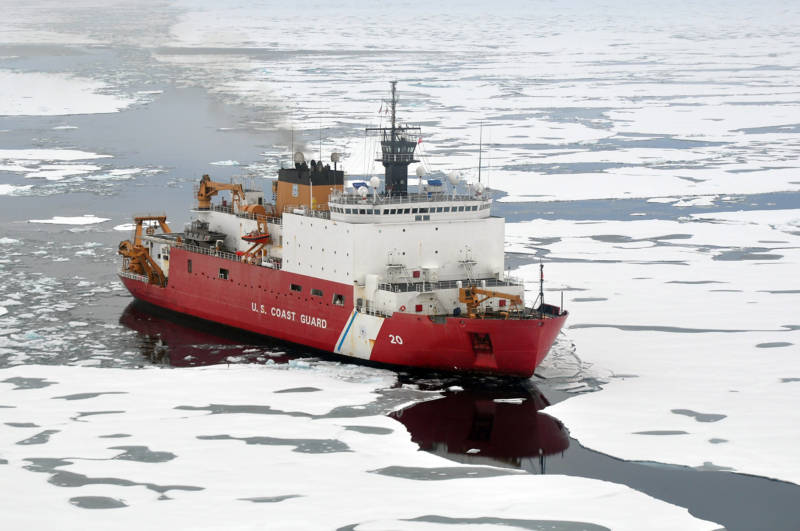
Next week, a NASA team of more than 40 scientists will take to the seas for a five-week expedition in the Arctic to study how changing conditions there are affecting ocean chemistry and ecosystems. The voyage, NASA’s first dedicated oceanographic research mission, is named ICESCAPE, which stands for “Impacts of Climate on Ecosystems and Chemistry of the Arctic Pacific Environment.” It will take place aboard the US Coast Guard Cutter Healy.
“We’re trying to address what is the long term impact of climate variability and change, both natural and anthropogenic, on the biogeochemistry and ecology of the Arctic,” said Paula Bontempi, program manager for NASA’s ocean biology and biogeochemistry research program.
The expedition will give scientists a chance to make field observations about the ocean, sea ice, and the atmosphere in regions where researchers often must rely on remote sensing technology for their data. One main focus of the research will be to observe how changes, such as a substantial decrease in sea ice, may be affecting the ocean’s ability to absorb CO2 from the atmosphere and the consequent effects on ecosystems.
“The Arctic is in the midst of some substantial changes,” said ICESCAPE Chief Scientist Kevin Arrigo of Stanford. “In the last 10 years, the ice-free season in the Arctic Ocean has increased by about 45 days. And this has a big impact on organisms in the Arctic that are keyed to these events.”
Arrigo says that the sea ice retreats about 28 days sooner than it did just a decade ago, and advances about 17 days later. He says this change has shifted the timing of food production. Phytoplankton, the base of the food chain in the Arctic Ocean, are now growing a month earlier than they did in the 1990s, says Arrigo, which could spell a problem for organisms such as the California gray whales, which time their migrations around peak food production.
“Over the years satellite imagery has shown a significant decline in the Arctic ice cover,” said Don Perovich, a research geophysicist at the Cold Regions Research and Engineering Laboratory in Hanover, NH, who is part of the ICESCAPE expedition. “But there’s really more to it than just the ice. It’s important to remember that sea ice isn’t just some isolated component. It’s part of larger system.”
Sea ice, he said, serves as a barrier between the atmosphere and the ocean, limiting the exchange of heat, moisture and gases; acts as a reflector of sunlight; and is a habitat for a rich marine ecosystem.
“It’s an ecosystem where sea ice and biology are intricately intertwined,” said Perovich. “You can think of the ice and the biology as executing this intricate dance, but it’s a dance where one of the partners has started changing its steps. And that partner is the sea ice cover.”
The 2010 ICESCAPE expedition starts in Dutch Harbor in the Aleutian Islands, will continue across the southern Chukchi Sea and into the Beaufort Sea along Alaska’s northern shelf. A second expedition is planned for 2011. NASA estimates the cost of the ICESCAPE project to be $10 million over four years.
The expedition blog has already launched, and will be updated daily once the expedition is underway, according to NASA spokesman Steve Cole.
I’ll be launching my own “Arctic expedition” next week. Starting June 18th, I’ll be spending two weeks with climate scientists at the Toolik Field Station in northern Alaska, as part of the Logan Science Journalism Program, run by the Marine Biological Laboratory in Woods Hole, MA. Check back here for periodic dispatches about the science, the landscape, and the impacts of constant daylight on one journalist’s mental state.
